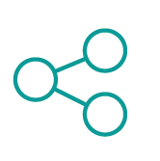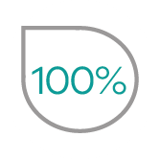Why is this important?
The Victorian Government is implementing contemporary workplace technologies to increase employee productivity, satisfaction and retention as well as making the government working environment more attractive to job seekers. Retention of skilled and motivated employees improves the government’s productivity and efficiency and reduces expenses associated with high staff turnover.
We must lead by example in the use of modern technology and systems that are fit for purpose, support secure information sharing and promote staff productivity and efficiency rather than hinder it. Government should continue to take advantage of cloud-based systems to enable employees to have flexible, easy access to software and the information necessary to perform their roles, irrespective of where they are and which department, they work in.
Forward planning is required to ensure that planned technology changes remain relevant into the future and can be applied across government to promote greater consistency in processes, integration and connectedness and realise time and cost efficiencies.
Government continues to be open to considering new and emerging technologies that effectively support day to day functions, create greater opportunities to engage with Victorian citizens and ensure that we can protect Victorian’s information against increasing cyber security threats.
Key focus for 2019-20
Victorian Government employees have experienced significant technology reform in the workplace over the last three years. This has occurred through the launch of the Victorian Government Digital Workplace program, the migration of staff to modern workplace tools including Microsoft Office 365.
In 2018-19 we continued to roll-out the Finance and Human Capital Management (HCM) common platforms and added a common procurement solution. In addition, we developed guidelines to assess technology asset risks by supporting disaster recovery and the management of IT obsolescence.
Technology reform is an ongoing commitment, and what we have delivered across the Victorian Public Service has resulted in a more efficient and productive workplace. This year we will explore opportunities for new common solutions that will enhance the way government employees operate.
To increase efficiencies and better enable employees to perform their role, we will continue to plan and evolve technology across Victorian Government departments and agencies.
Case study: Mobile Technology and Intelligence Management (BlueConnect)
Mobile Technology
The Mobile Technology project has successfully deployed 9,490 iPads and iPhones to general duties and Highway Patrol police at the rank of sergeant and below, as well as Protective Services Officers (PSOs). These devices support safer, smarter and faster policing as police officers can access real-time information when out in the field.
The devices have a purpose-built application, ‘IRIS’, that enables police officers to perform location, vehicle, licence and person checks and view information from national databases, wherever they are. More functions and applications will be made available on the devices throughout 2019.
Crime and event reporting provides frontline members with the ability to submit reports while in the field on IRIS rather than waiting to do it when they return to the station.
Mobile devices work in conjunction with body worn cameras, which are currently being deployed across the state to capture audio and video recordings to increase the transparency of interactions between police members and the public, as well as improved evidence capture. The cameras pair with the mobile device through an application called Axon View.
Intelligence Management
The Intelligence Management project is responsible for implementing ‘Neo’, a web-based solution with advanced data analytic capabilities and the ability to search across multiple data sources using one search engine.
Historically, Victoria Police did not have the ability to create intelligence on a single platform. Neo has introduced the capability for members to collate, analyse and use information to generate insights to produce intelligence information and inform operational decision-making.
Neo enables users to access overt records and information from other work areas apart from their own. For example, if an investigator was based at Dandenong, they would only have access to Dandenong’s records. Using Neo, they would have access to records across the state, which will greatly assist in investigating state-wide offending and identifying organised crime networks.
Over 1,000 intelligence practitioners, divisional management team members, investigators and intelligence support officers currently have access to Neo. It is expected an additional 2,000 members will be provisioned over 2019.
Case study: Cenitex Digital Workplace
The Cenitex Digital Workplace program recognises and responds to the need for a more flexible workplace that supports thousands of Victorian public servants, all with different needs and workstyles.
As the nature of the relationship between citizens and government continues to shift with a greater demand for digital service delivery, the Victorian Government workplace has adapted to meet these demands. The introduction of modern tools and technologies supports greater opportunities for collaboration and increased productivity.
Through a single portal, the Cenitex Digital Workplace program offers seamless access to modern applications and cloud services such as Microsoft Office 365, and all lines of business applications that are unique to the individuals’ work. This means employees have access to their required applications, on any device, at any time, from any location.
The Digital Workplace program consists of common digital tools, data and processes that employees use including, including:
- modern devices
- collaboration tools (Slack, Microsoft Teams, Office 365)
- line of business applications
- corporate services (finance, human resources, intranet etc).
- application store
- network and remote access
- office productivity tools
The Digital Workplace program provides seamless access to internal data, securely and from a remote location. Victorian Public Service employees from different departments can now work together in a simple and flexible manner, without limitations.
2016-2020 IT Strategy journey

Cenitex performance management framework approved
2016-17
Changes to Cenitex governance arrangement approved
2016-17

7 statements of direction developed to guide WOVG best-practise approach to common IT capabilities and management
2016-17
Worked with Commonwealth & other states to propose a way forward for cyber-security industry certification
2017-18
Workforce Identity and Access Management Strategy and Framework developed
2017-18

Deployed a geospatially enabled government telecommunication assets register – now has 1.5M assets
2017-18
Cenitex removed single points of failure and introduced modern desktop software
2018-19
Selected, planned and commenced deployment of WOVG ERP Solutions (procurement, finance, HCM)
2018-19

Launched a WOVG digital workspace which is now accessible to 100% of employees
2019-20

32 delivered action items
2019-20
Develop discussion paper to guide adoption of Robotics Process Automation across government
2019-20
Identify and recommend a Workforce IdAM Solution
2019-20

3 actions to be delivered
Updated
